Comparative Transcriptome Analysis of Iron and Zinc Deficiency in Maize (Zea mays L.)
- PMID: 33371388
- PMCID: PMC7767415
- DOI: 10.3390/plants9121812
Comparative Transcriptome Analysis of Iron and Zinc Deficiency in Maize (Zea mays L.)
Abstract
Globally, one-third of the population is affected by iron (Fe) and zinc (Zn) deficiency, which is severe in developing and underdeveloped countries where cereal-based diets predominate. The genetic biofortification approach is the most sustainable and one of the cost-effective ways to address Fe and Zn malnutrition. Maize is a major source of nutrition in sub-Saharan Africa, South Asia and Latin America. Understanding systems' biology and the identification of genes involved in Fe and Zn homeostasis facilitate the development of Fe- and Zn-enriched maize. We conducted a genome-wide transcriptome assay in maize inbred SKV616, under -Zn, -Fe and -Fe-Zn stresses. The results revealed the differential expression of several genes related to the mugineic acid pathway, metal transporters, photosynthesis, phytohormone and carbohydrate metabolism. We report here Fe and Zn deficiency-mediated changes in the transcriptome, root length, stomatal conductance, transpiration rate and reduced rate of photosynthesis. Furthermore, the presence of multiple regulatory elements and/or the co-factor nature of Fe and Zn in enzymes indicate their association with the differential expression and opposite regulation of several key gene(s). The differentially expressed candidate genes in the present investigation would help in breeding for Fe and Zn efficient and kernel Fe- and Zn-rich maize cultivars through gene editing, transgenics and molecular breeding.
Keywords: functional genomics; homeostasis; hormonal regulation; iron; maize; malnutrition; photosynthesis; zinc.
Conflict of interest statement
The authors declare that the research was conducted in the absence of any commercial or financial relationships that could be construed as a potential conflict of interest.
Figures

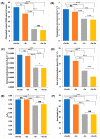
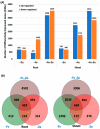
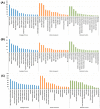
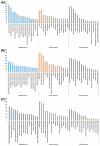

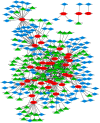
References
-
- Mallikarjuna M.G., Thirunavukkarasu N., Hossain F., Bhat J.S., Jha S.K., Rathore A., Agrawal P.K., Pattanayak A., Reddy S.S., Gularia S.K., et al. Stability performance of inductively coupled plasma mass spectrometry-phenotyped kernel minerals concentration and grain yield in maize in different agro-climatic zones. PLoS ONE. 2015;10:e0139067. doi: 10.1371/journal.pone.0139067. - DOI - PMC - PubMed
-
- Gupta H.S., Hossain F., Nepolean T., Vignesh M., Mallikarjuna M.G. Understanding genetic and molecular bases of Fe and Zn accumulation towards development of micronutrient-enriched maize. In: Rakshit A., Singh H., Sen A., editors. Nutrient Use Efficiency: From Basics to Advances. Springer India; New Delhi, India: 2015. pp. 255–282.
Grants and funding
LinkOut - more resources
Full Text Sources
Molecular Biology Databases

